The hot and muggy weather still follows us as we arrive in Zanzibar, a semi-autonomous archipelago which united with Tanganyika in 1964 to form the United Republic of Tanzania. The ship has to tender in as there is no port large enough to accommodate it.
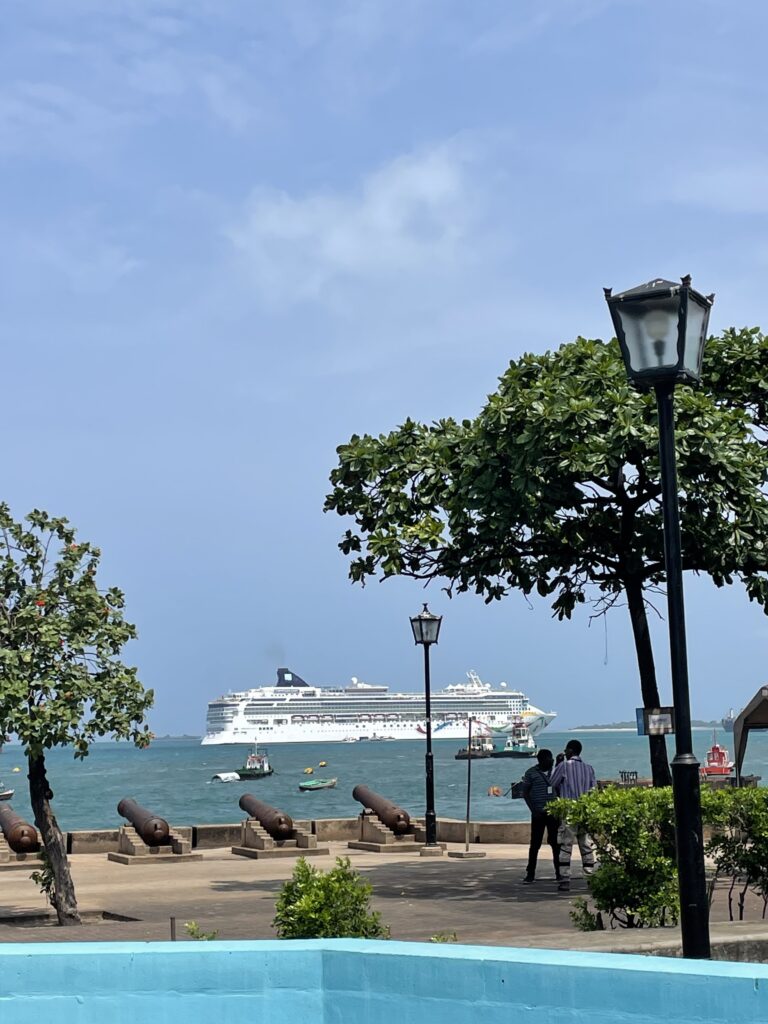
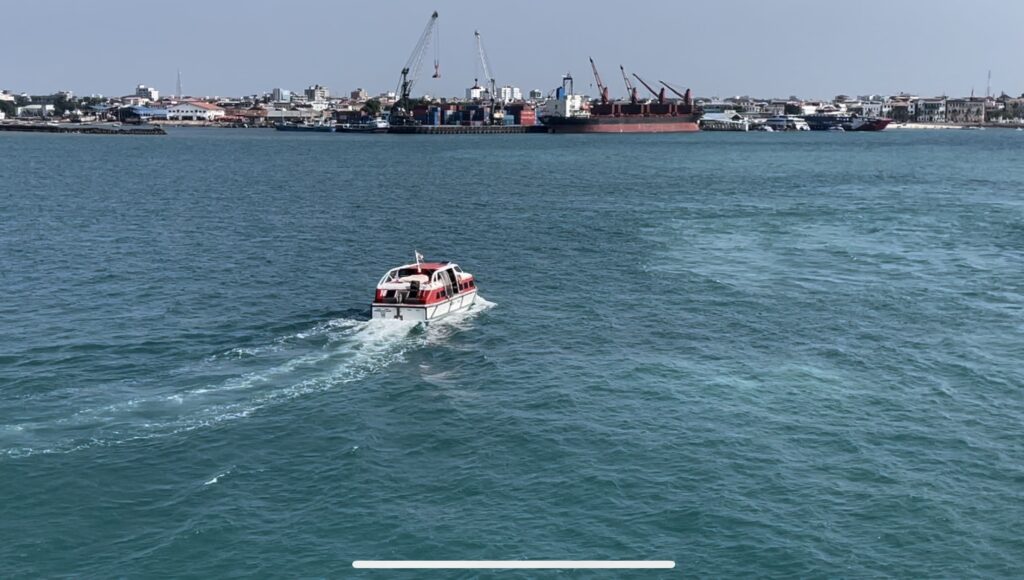
We meet our guide Charles, who brings us to historic Stone Town, another UNESCO World Heritage Site. Our first stop is at the Anglican Christ Church Cathedral which was built on the grounds of a former slave market and where the whipping post for slaves was located. A stark reminder occupies an area in front of a large tree. Dug into the ground is a cement trench where an artist has sculpted six African slaves torsos where five of them have chains around their necks. The six one has none, denoting when freedom from slavery was achieved in the late 1890s. The expression on their faces denotes hopelessness and resignation to their pitiful fate.
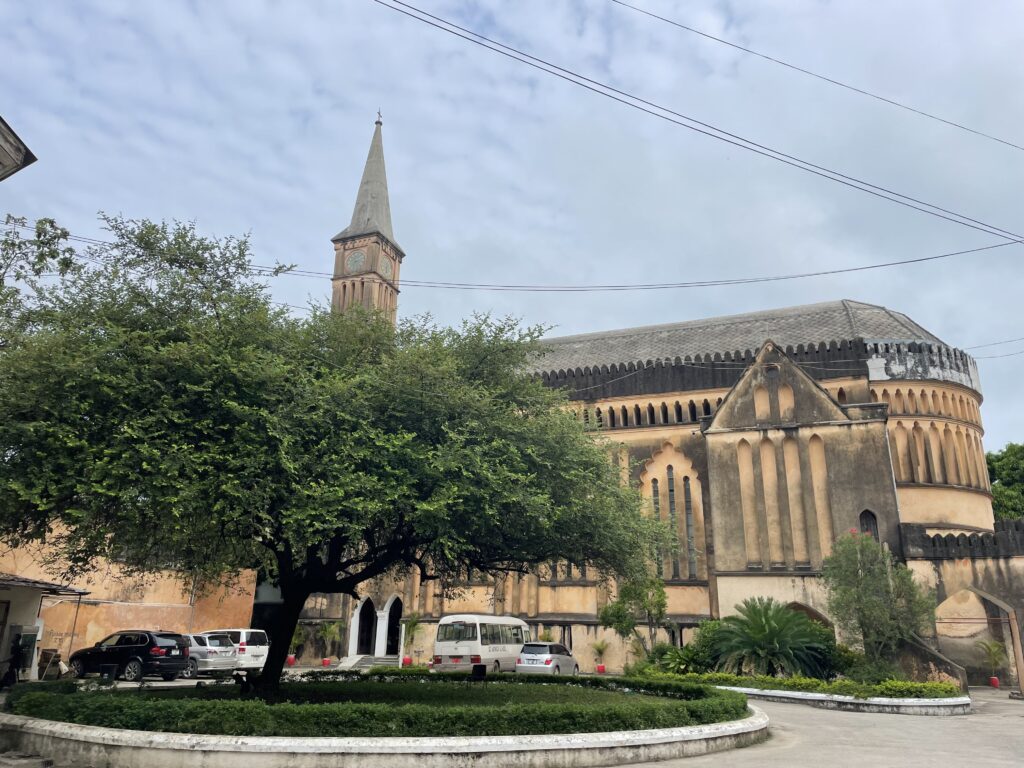

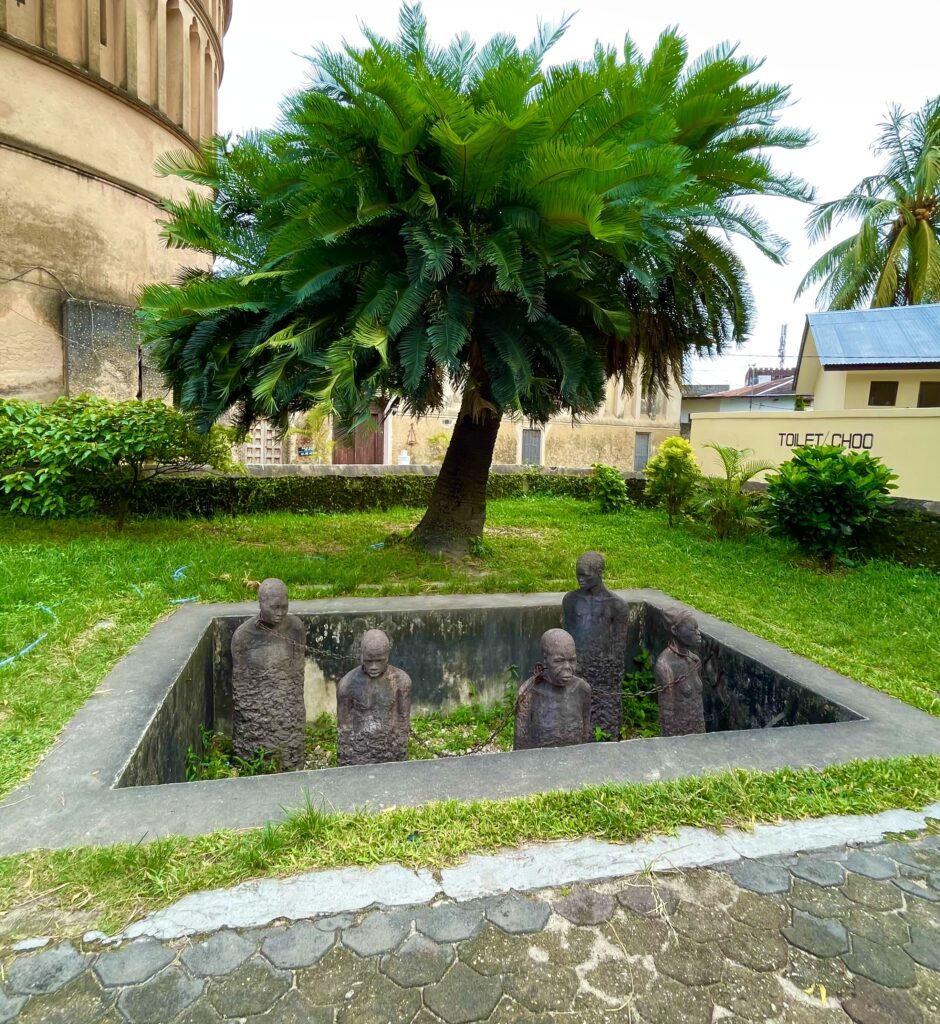
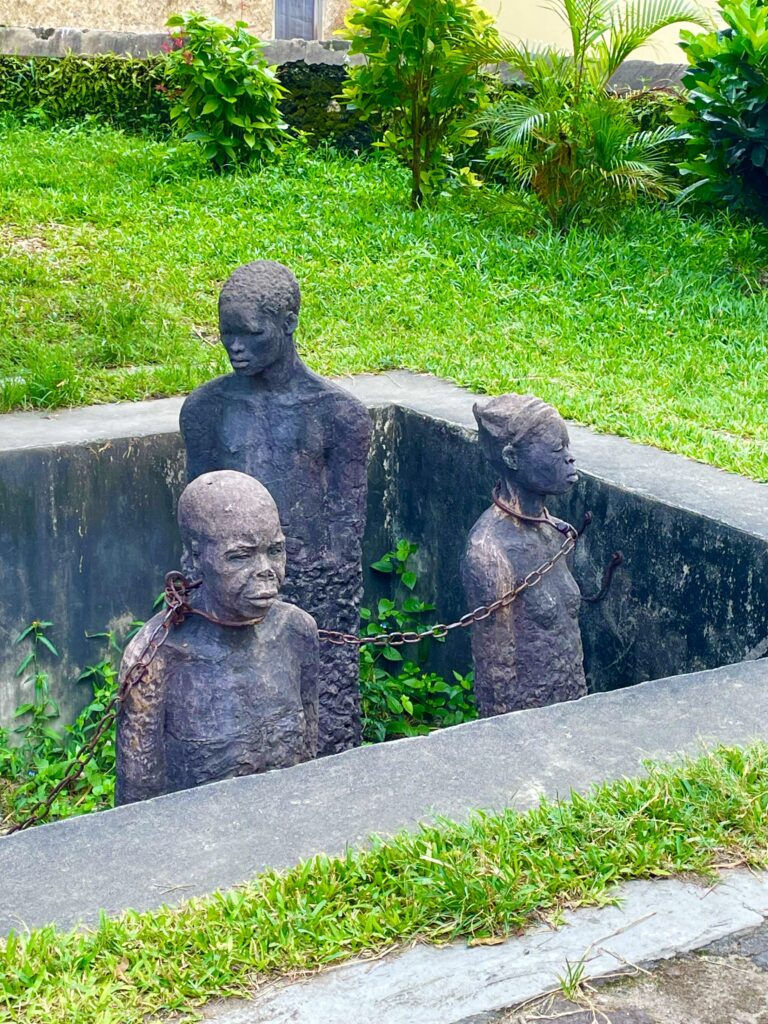
We are also taken underneath the church where dark chambers exist and where slaves were taken before auction. Men, up to fifty at a time, were were kept in a separate room than from the women and children.
We can’t imagine humans being crammed in these rooms with no sanitary conditions except for a trench on the floor where unfortunately was flooded daily by the rising tides. Many, of course, who managed to survive the boat crossing and the walking to get to Zanzibar, did not survive these horrific conditions. Young men who did, and further managed to come through being whipped at the post as proof of their resilience, were prized as they could be strong backs for their new masters. Women could be sold as concubines, with their children in tow.




We get back on the bus but five minutes later, we disembark on the side of a very busy road to take a stroll into the Darajani Market. It’s a hustle and bustle to try and make your way into the small lanes filled with vendors selling fruits, vegetables, spices and touristy items.
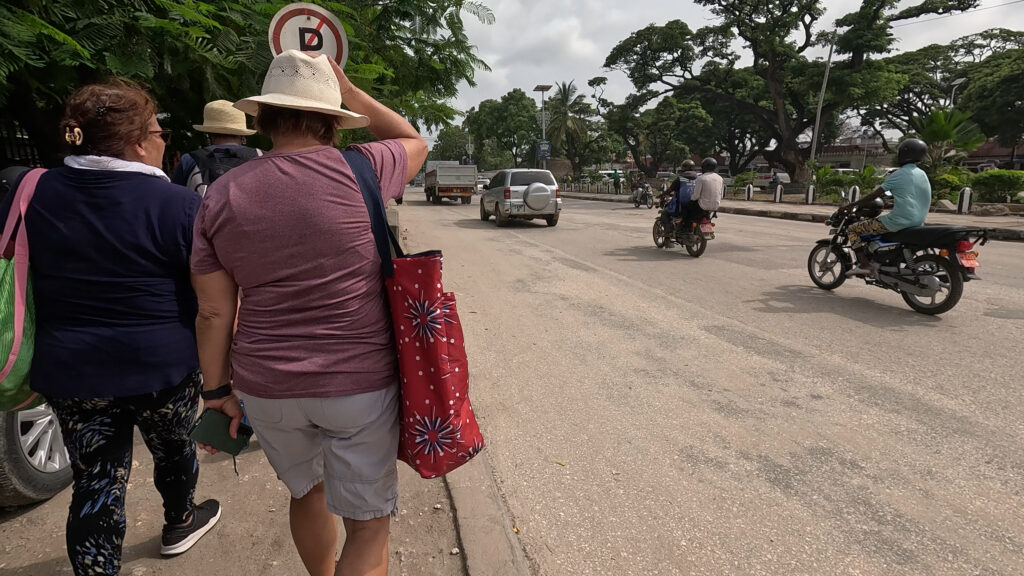

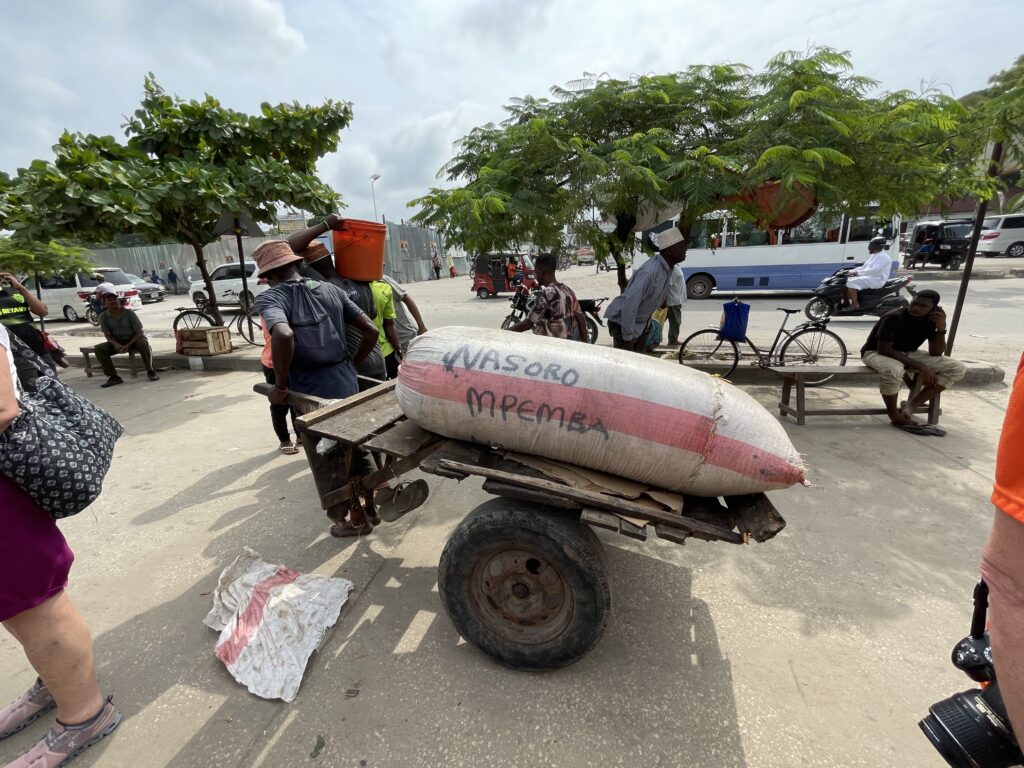
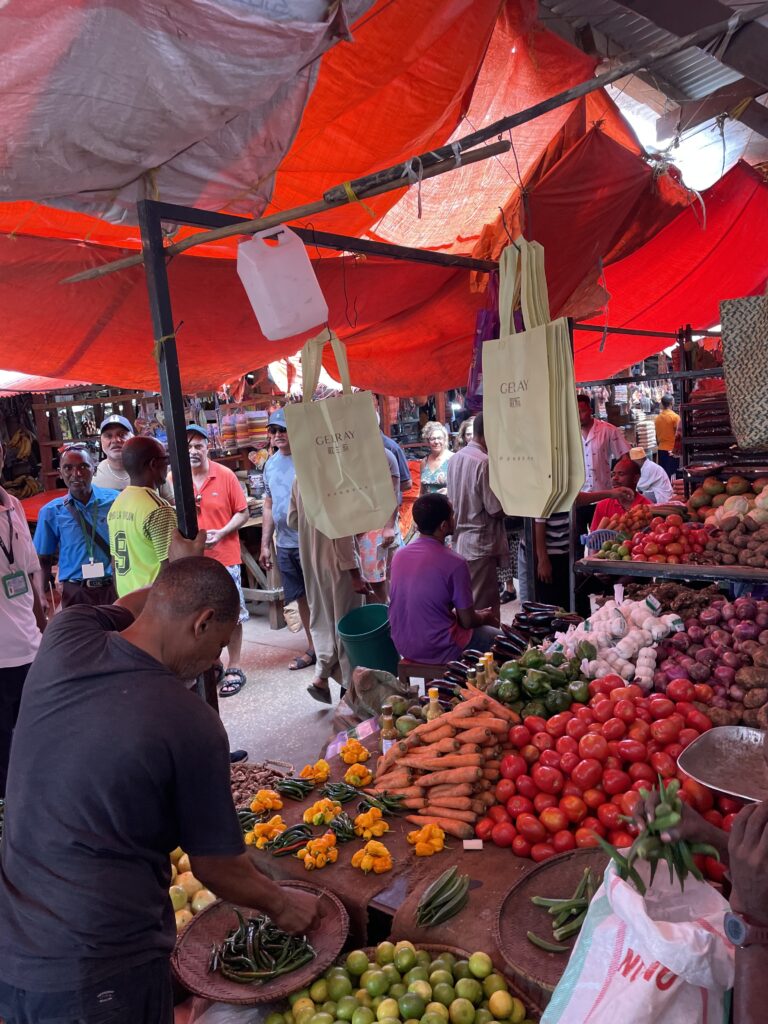


We pass by the meat market and see all of the fresh meats hanging on display.
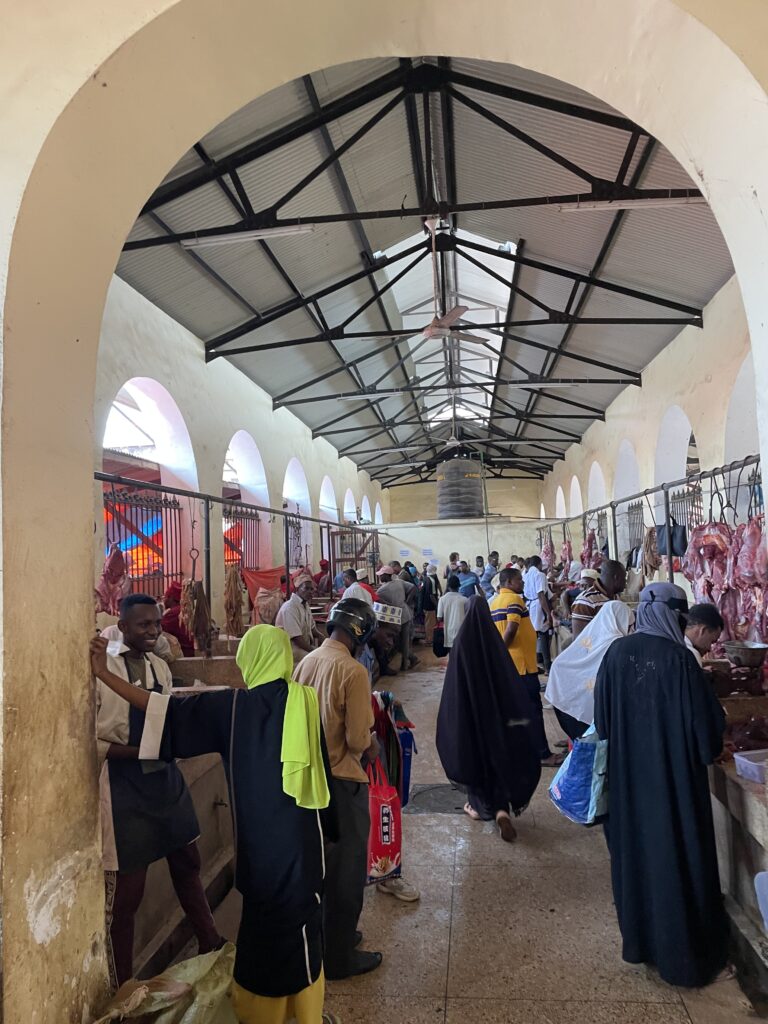
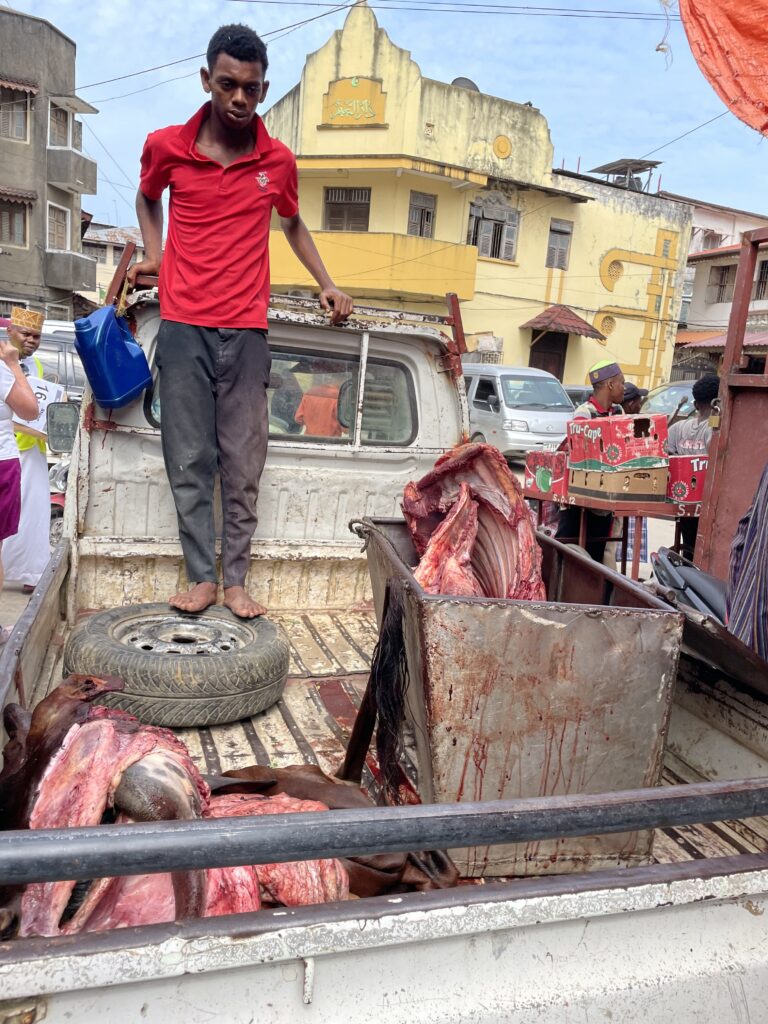
We finally exit the market into the streets of Stone Town. We constantly have to dodge the Tuk-Tuks and motorbikes in the narrow streets.
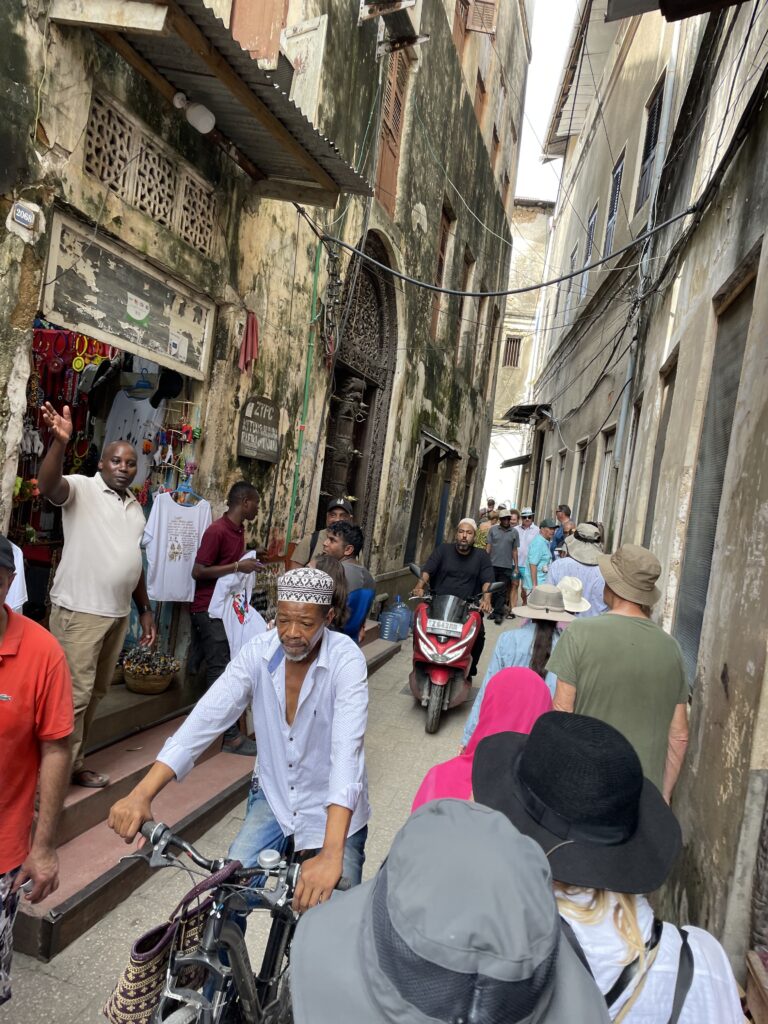
Despite the hot and humid air, we like the artisans we see along the way. One particular gentlemen carves painting size replicas of Omani doors. We wish we had space to bring one home!
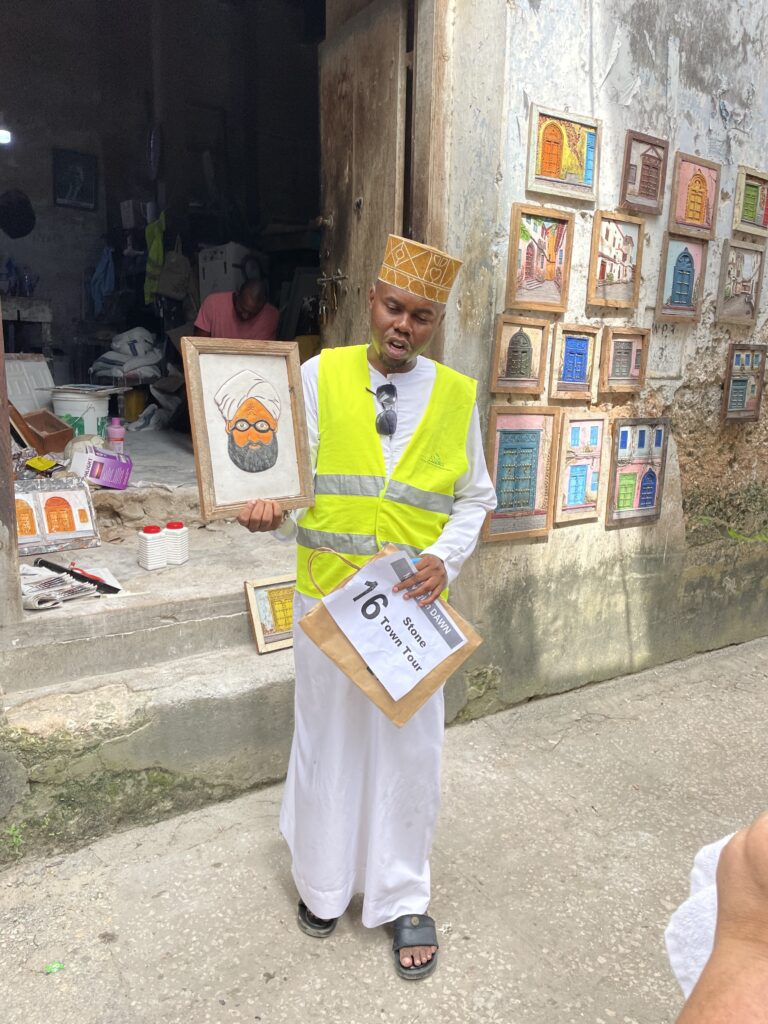


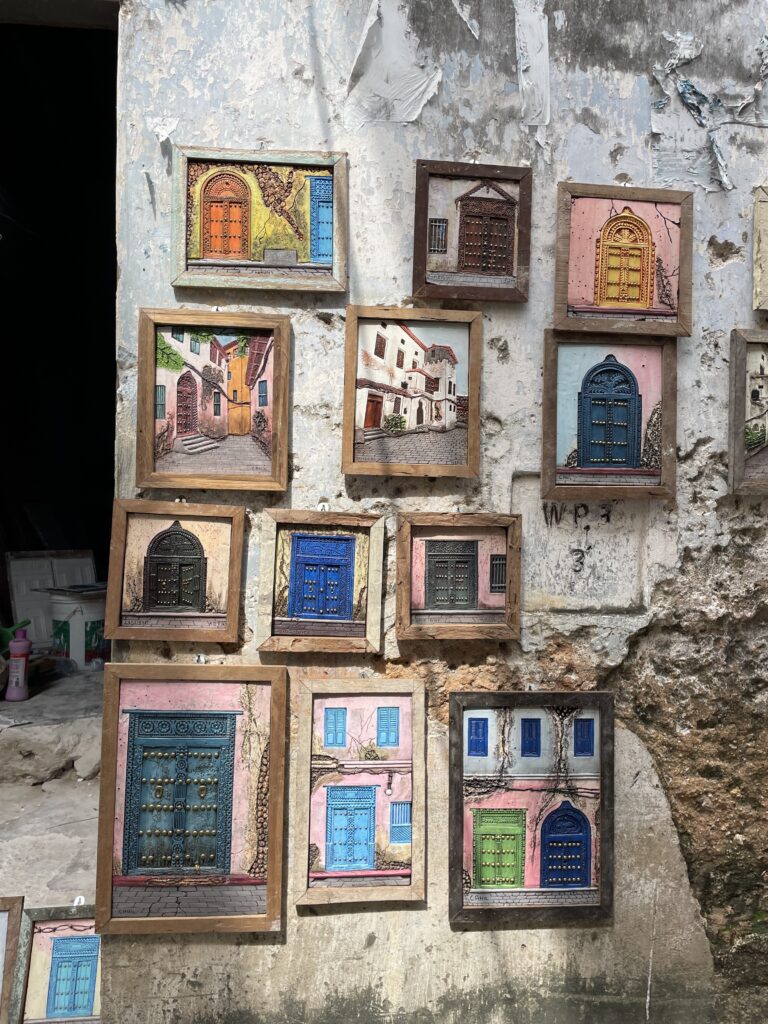
We visit an Hammani bath house. This public bath house was built in the late nineteenth century but mostly for the upper classes. An hexagonal pool and fountain greets you as you walk in and visitors would be shaved, massaged and bathed in nearby alcoves. More pools and steam rooms existed as well.
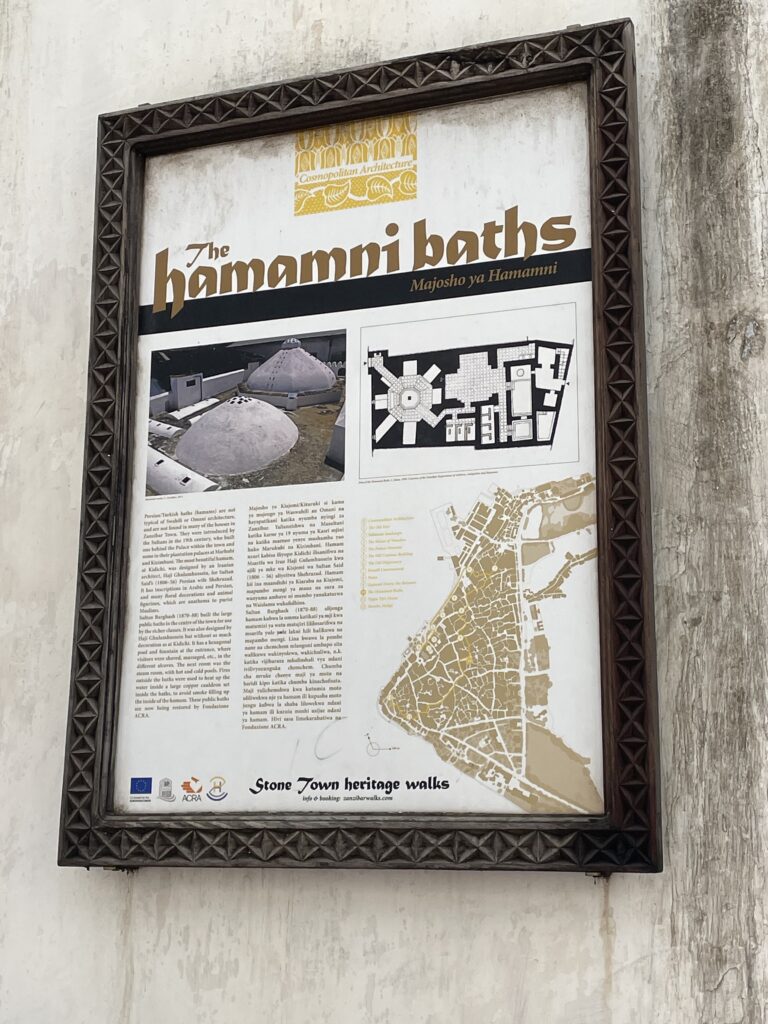
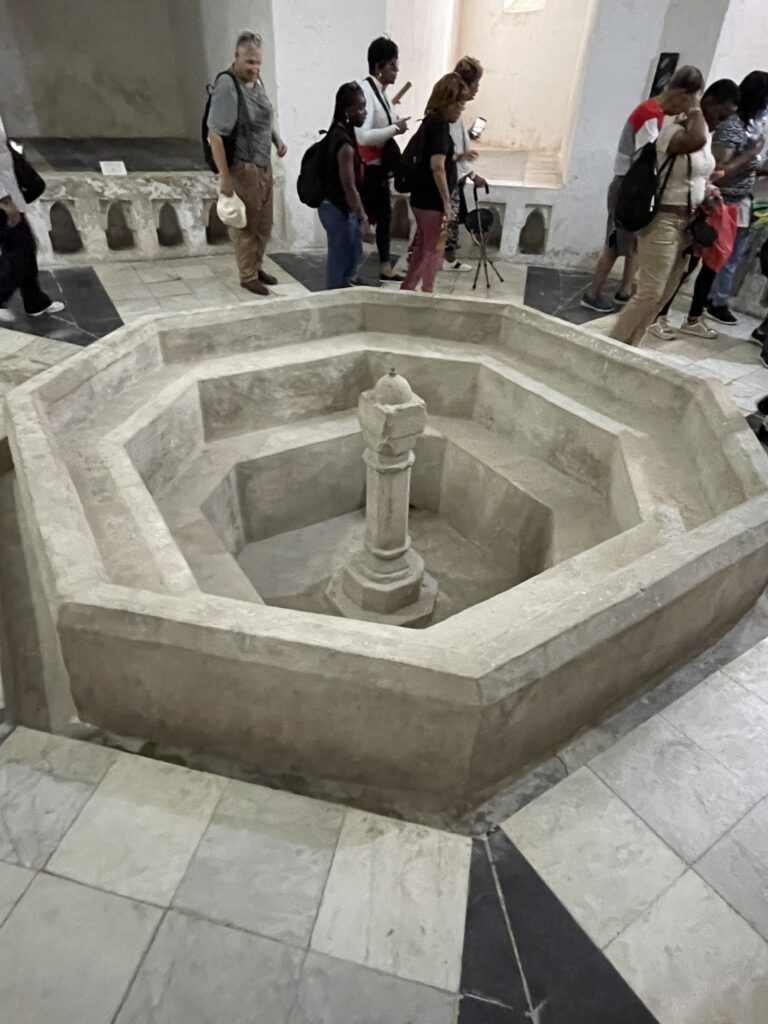
We come to a rare intersection of four alleys with a small courtyard where local men are gathered drinking coffee. Interestingly, it is called “Jaws Corner” apparently named by the elderly gentlemen who started an impromptu coffee stall.
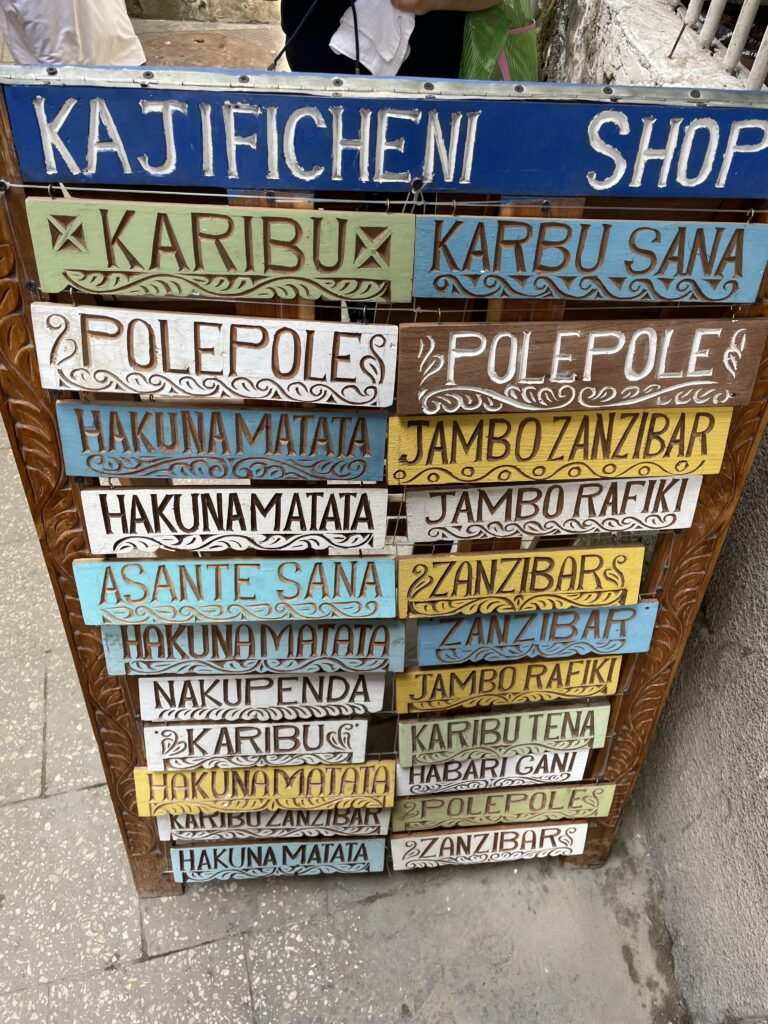
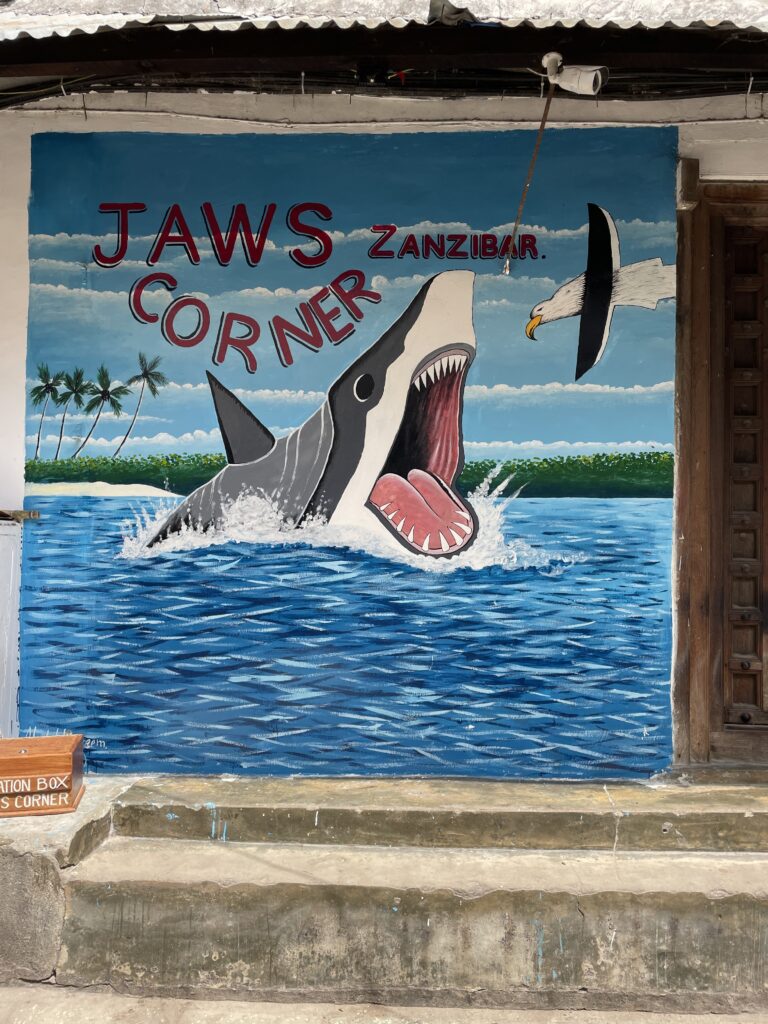
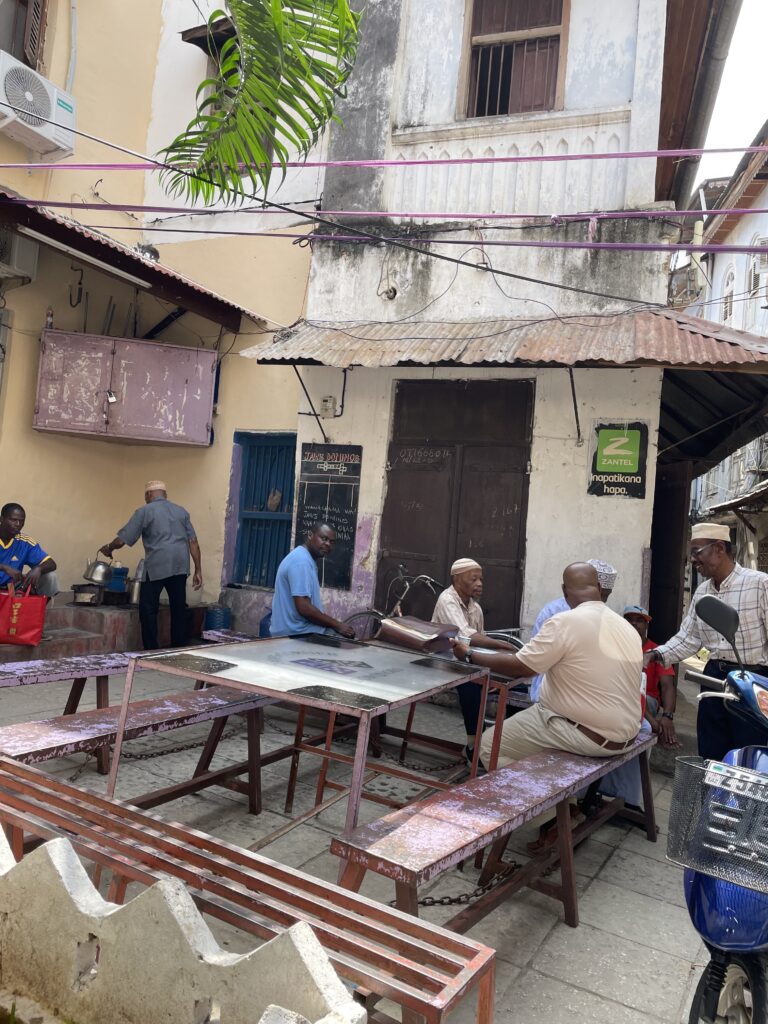
We make way for an old man struggling pulling a car but laughing as he passes us.
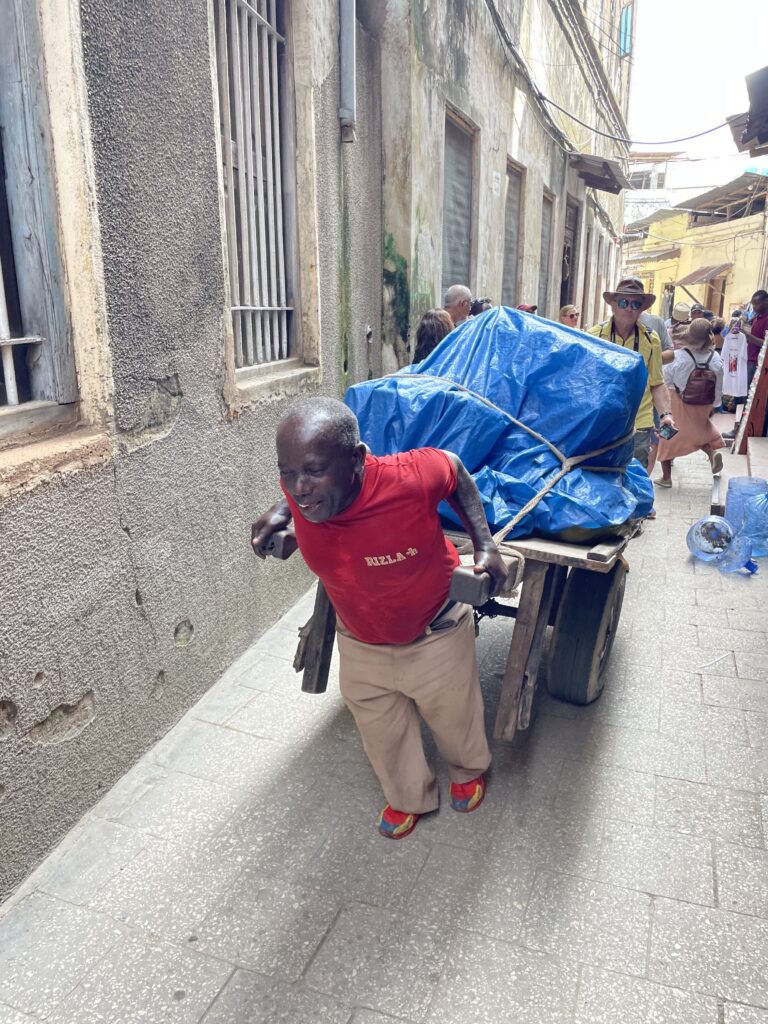
We pass through the Old Fort, another attraction for Stone Town. Making our way into it’s large grassy courtyard, Charles explains that it has multi-purpose uses such as a cultural centre with tourist shops, a festival gathering place and an open-air amphitheatre where live dance and music shows are held.

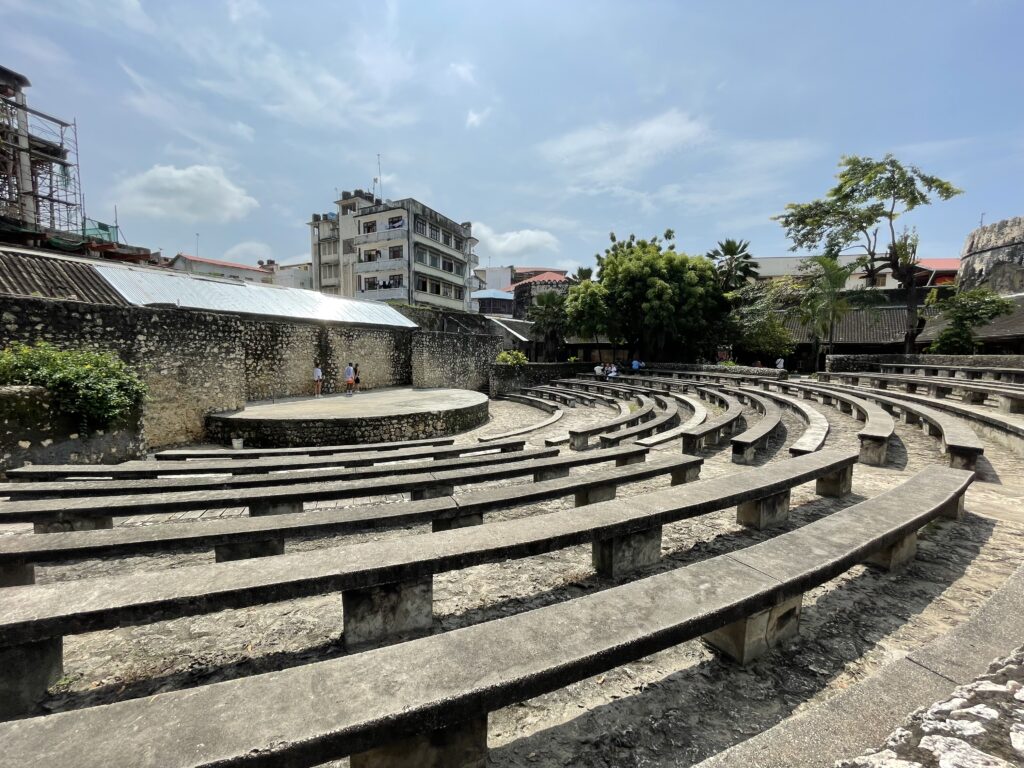
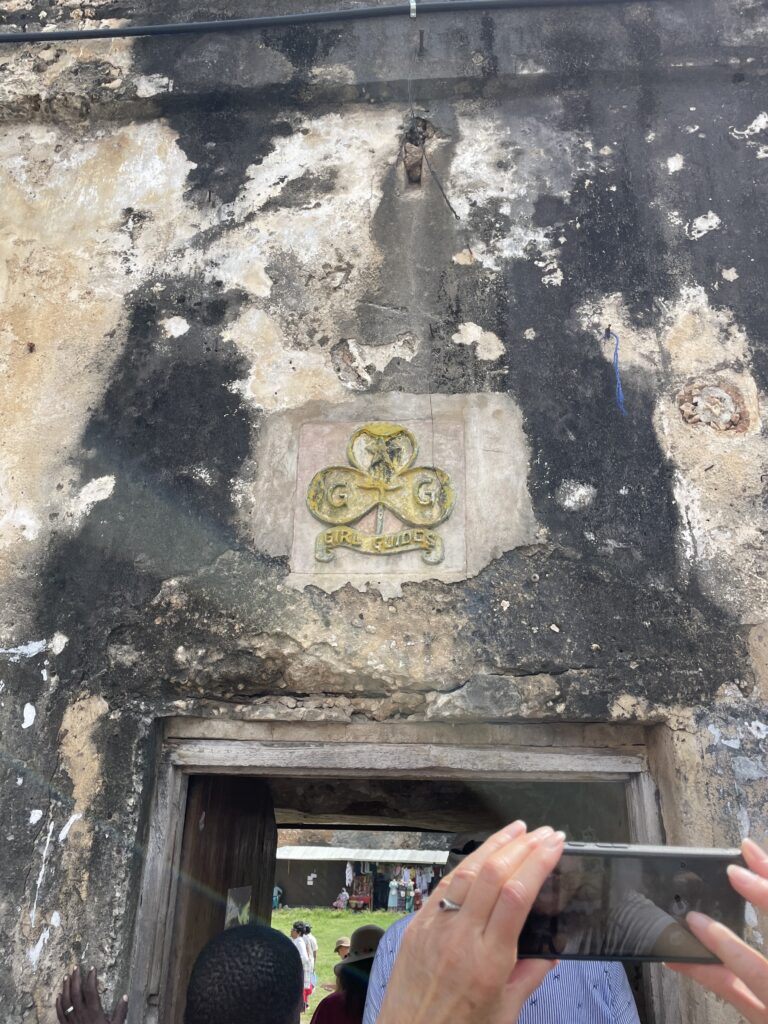
As we exit the Old Fort, we are met with the blue sea across the street where the Forodhani Gardens provide shade and a breeze.
Moments later, we are brought to the Serena Hotel for refreshments and a view of the beach.
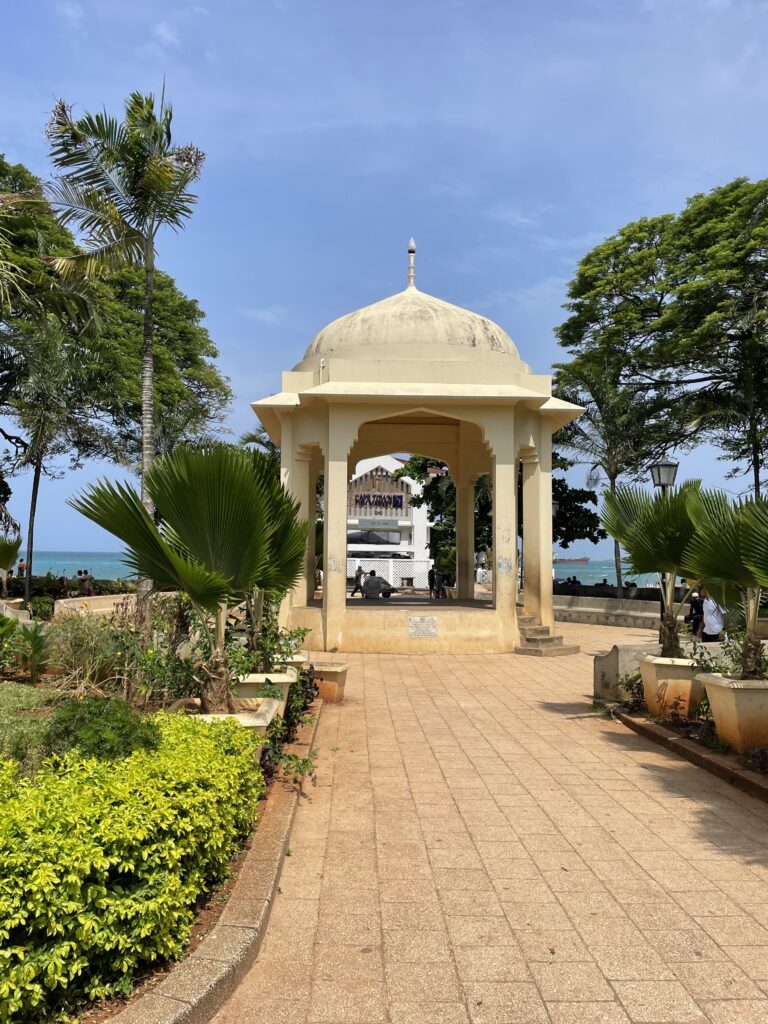
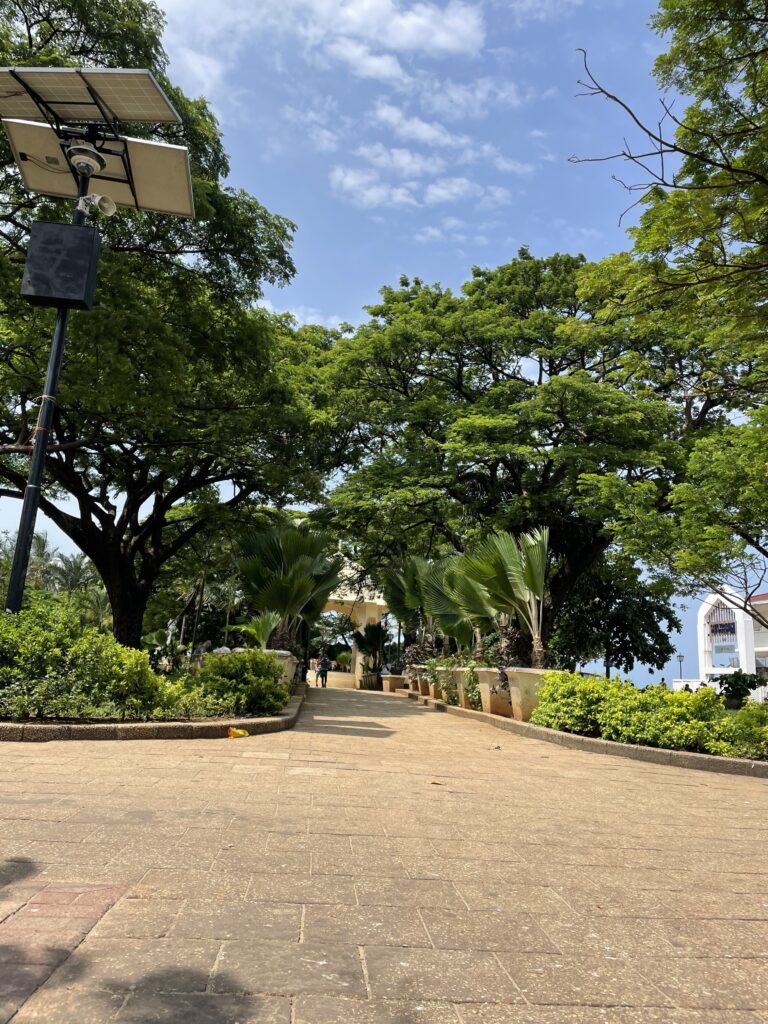
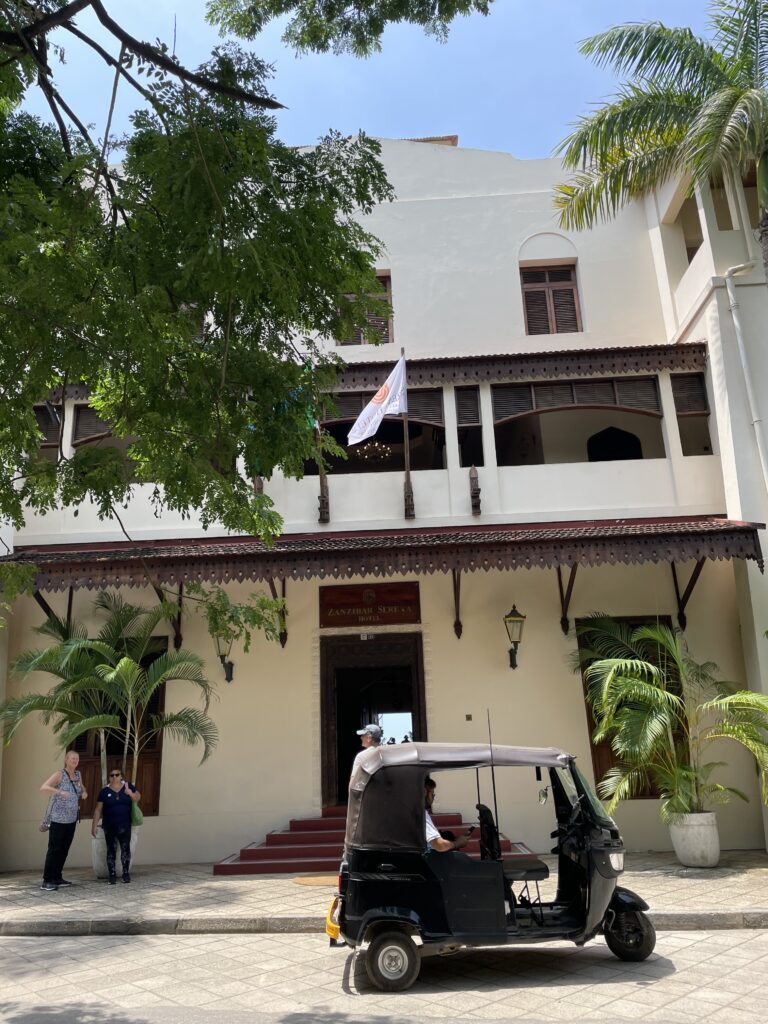
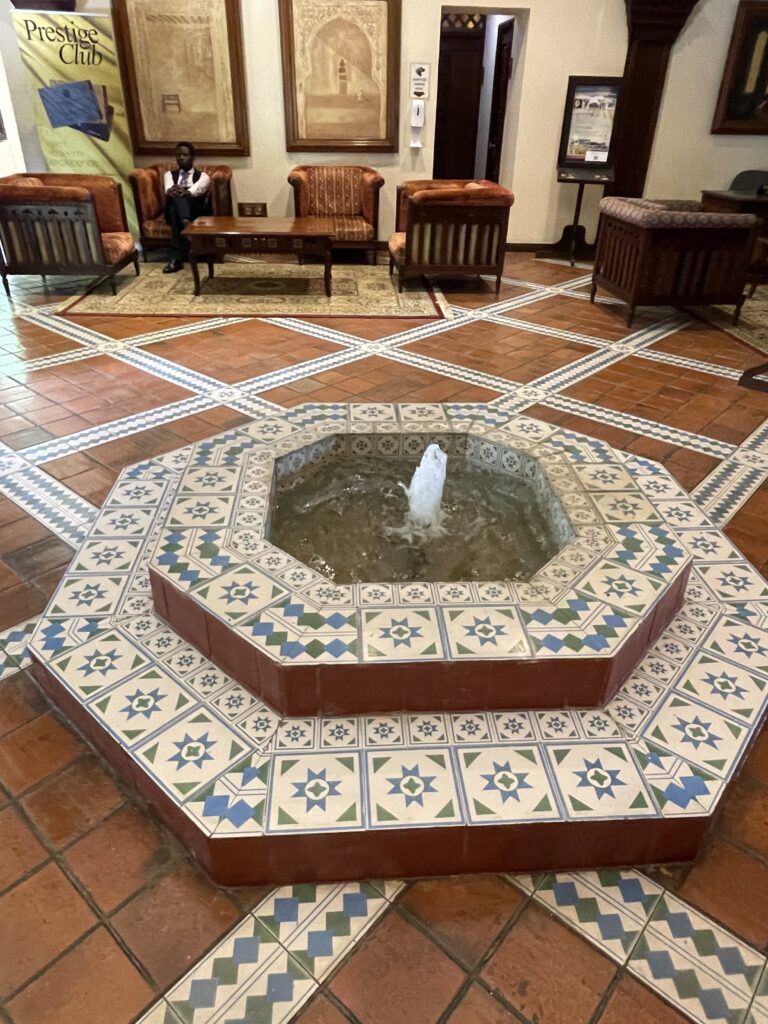
Our day in Zanzibar comes to an end too quickly and it’s back on board for our short jaunt to Dar es Salaam.
Recent Comments